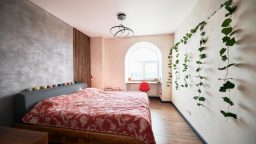Minimalist interior design is all about creating a simple, functional, and aesthetically pleasing space. It focuses on decluttering and reducing visual noise to create an environment that feels calm and serene. While it’s often associated with modern homes, minimalist design can work in almost any space if done right. If you’re ready to embrace simplicity, this guide will help you understand the principles of minimalist interior design and how to incorporate them into your home.
- Embrace Simplicity in Furniture
The foundation of minimalist design is simplicity, and this extends to the furniture in your home. The goal is to select pieces that are functional and practical without being overly ornate or bulky.
- Choose clean, sleek lines: Opt for furniture with simple, clean lines and neutral colours. Think modern sofas with understated profiles, tables with smooth finishes, and chairs with minimalist designs.
- Quality over quantity: Instead of filling a room with many pieces of furniture, select high-quality, well-made items that will last and serve multiple purposes. For example, a well-designed sofa that’s both comfortable and stylish can be a statement piece on its own.
- Multifunctional furniture: In minimalist spaces, every piece of furniture should have a purpose. Invest in multifunctional items, such as storage ottomans, fold-out desks, or modular shelving systems. This helps keep the space free of unnecessary clutter while maximizing functionality.
When choosing furniture for a minimalist interior, the idea is less is more—select what you truly need, and opt for timeless pieces that will work for years to come.
- Stick to a Neutral Colour Palette
Minimalist design often revolves around neutral colours, which help create a calm and cohesive look. These colours can make a space feel larger and brighter while allowing other design elements, like textures and natural materials, to shine.
- Base colours: Whites, greys, blacks, and beige tones are the foundation of most minimalist interiors. A neutral base creates a serene, uncluttered backdrop that promotes relaxation and focus.
- Accent colours: While neutral colours dominate, you can introduce subtle accent colours to add interest. Use muted tones like soft pastels or earthy hues (think muted greens, terracotta, or warm browns) to create contrast without overwhelming the space.
- Monochromatic schemes: Another minimalist approach is using various shades of the same colour. A monochromatic palette of whites, off-whites, and greys can add depth to a room while maintaining a clean and cohesive feel.
Sticking to neutral tones allows you to create a timeless design while also making it easier to coordinate furniture and accessories.
- Declutter and Keep Only What You Need
One of the key principles of minimalist interior design is decluttering. A minimalist home should be free from unnecessary items that take up space and distract from the overall aesthetic.
- Declutter regularly: Go through each room and get rid of items that don’t serve a functional or aesthetic purpose. If you haven’t used something in the past six months or a year, it’s time to let it go.
- Storage solutions: For the items you do need to keep, find stylish yet practical storage solutions. Invest in storage furniture that can double as décor, such as sleek cabinets, under-bed storage, or floating shelves that don’t take up valuable floor space.
- Avoid excessive decoration: Instead of crowding a room with many decorative items, focus on a few well-chosen pieces that serve both a functional and decorative purpose, such as a unique sculpture, a statement light fixture, or a single piece of artwork.
By reducing clutter, you create a space that feels calm, open, and inviting, allowing the remaining pieces to stand out.
- Focus on Natural Light
Natural light is a hallmark of minimalist design. It not only brightens a room but also contributes to the sense of openness and tranquillity that minimalism promotes.
- Maximize natural light: Choose window treatments that allow light to flood the room. Use sheer curtains or opt for blinds that can be easily adjusted to control the amount of light coming in.
- Open layouts: Open floor plans, where possible, help encourage natural light flow. If walls or doors are blocking the flow of light, consider making adjustments to increase the natural light in the space.
- Reflective surfaces: Mirrors, glass, and polished surfaces can help reflect natural light and create the illusion of more space. A few well-placed mirrors can brighten up a minimalist room without adding unnecessary decoration.
Bringing in as much natural light as possible makes your space feel airy and light, which is essential in minimalist design.
- Use Textures to Add Depth
In a minimalist design, where colours and patterns are kept to a minimum, texture plays a crucial role in adding visual interest and depth to the space.
- Layer textures: Add depth to your design by layering different textures. For example, combine soft cotton or linen cushions with a wool throw on a sleek leather or fabric sofa. Or, mix smooth surfaces like metal or glass with natural textures such as wood or stone.
- Natural materials: Incorporate natural materials like wood, stone, and bamboo, which add warmth and texture to the minimalist environment. A wooden coffee table, a stone vase, or a woven rug can make a space feel both elegant and inviting without overwhelming the clean aesthetic.
- Textured fabrics: Choose textured fabrics like linen, wool, and cotton for throws, cushions, or upholstery. These fabrics can add a layer of comfort and richness to an otherwise simple design.
Using textures thoughtfully helps you avoid the risk of your minimalist space feeling too sterile or bare while maintaining a clean, balanced look.
- Incorporate Greenery
Adding plants is an easy way to bring life and vibrancy to a minimalist space. Greenery can soften sharp lines and add natural colour to a room.
- Minimalist plants: Choose simple plants with clean lines and low-maintenance care, such as succulents, snake plants, or fiddle-leaf figs. Large, leafy plants can act as focal points, while small potted plants can sit on shelves or windowsills.
- Stylish planters: Choose modern, simple planters in neutral tones like black, white, or metallics. You can even use baskets or sleek ceramic pots to keep the focus on the plants themselves.
Plants not only provide a burst of nature but also enhance the minimalist aesthetic by adding organic elements to the space without cluttering the room.
- Prioritize Quality Over Quantity
Minimalism isn’t just about reducing the number of items in your home—it’s about focusing on quality over quantity. This means investing in fewer, higher-quality items that will last longer and serve multiple purposes.
- Invest in timeless pieces: Choose classic, well-crafted furniture and décor items that are both functional and beautiful. Look for versatile pieces that can adapt to various uses over time, like a sofa with removable covers or a coffee table that doubles as storage.
- Carefully curate your collection: Rather than accumulating many small items, invest in a few high-quality pieces that serve both practical and aesthetic purposes. A statement piece of art, a high-quality rug, or a well-designed chair can elevate your space without overwhelming it.
Focusing on fewer, more durable pieces will not only reduce clutter but will also give your home a more polished, intentional look.
- Keep the Layout Open and Functional
A minimalist layout encourages openness and a sense of flow. The key is to arrange your furniture in a way that maximizes space and function while minimizing clutter.
- Open floor plans: Avoid overcrowding a room with too much furniture. Opt for an open layout where possible to allow free movement and better flow of light.
- Functional furniture arrangements: Arrange furniture to promote conversation and ease of movement. Avoid placing furniture in front of windows or blocking key pathways. Instead, focus on creating spaces that are both aesthetically pleasing and functional for everyday use.
Minimalist design emphasizes the importance of space. Ensuring that your layout is open and functional makes it easier to maintain a serene, uncluttered environment.
Conclusion
Minimalist interior design is about simplifying your space while still creating a functional, inviting environment. By focusing on clean lines, neutral colours, natural light, and high-quality furnishings, you can create a space that’s both beautiful and practical. The key is to find balance—embracing simplicity while incorporating the elements that make your home feel comfortable, warm, and personal. Whether you’re starting with a complete overhaul or making small adjustments, minimalist design offers endless possibilities for creating a space that reflects your style and lifestyle.





